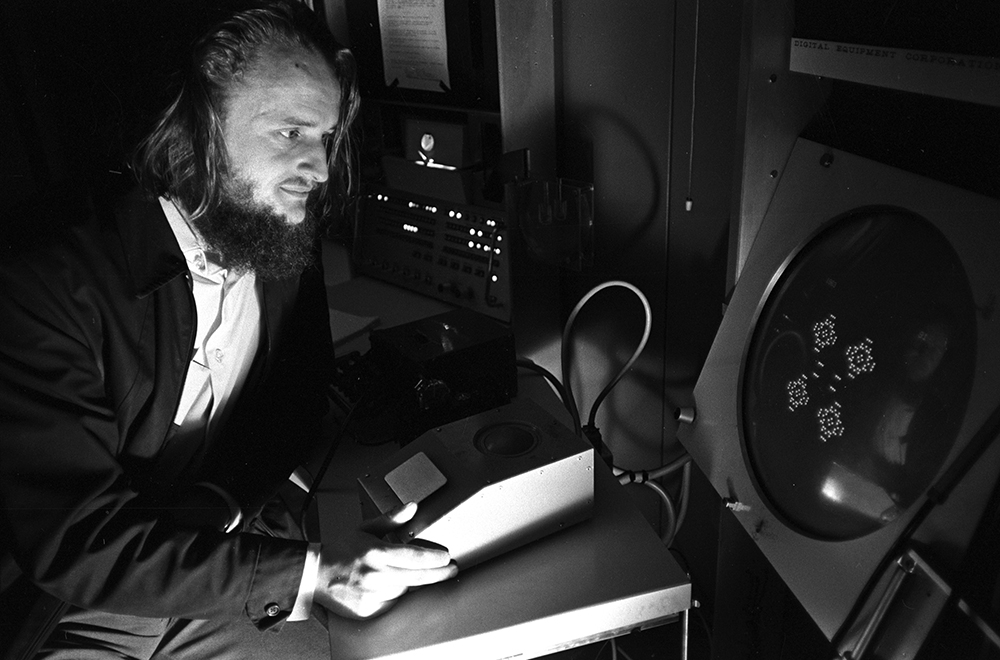 |
| Science History of the Universe - Volume 8 |
But this enchanted realm of Projective Geometry had a slow and difficult development with many reverses. In its early stages as linear perspective it was explored by Renaissance artists. The artists were interested in adding accurate perspective to their pictures and took their lead from the ancient Greeks. Pappus of Alexandria is usually credited with discovering the first theorem of Projective Geometry:
Pappus's Theorem Proof
Filippo Brunelleschi the Renaissance architect is credited with being among the first pioneers of the mathematical technique of linear perspective and the method he developed was described by the author, artist, architect, poet, priest, linguist, philosopher and cryptographer etc etc Leon Battista Alberti in his treatise on painting entitled:
How one-point linear perspective works
Later the artists Albrecht Dürer and Leonardo da Vinci employed linear perspective in their work and wrote treatises on the subject, though Leonardo's work is lost.
ALBRECHT DURER (1471-1528)
A 1525 engraving showing a procedure for the perspective drawing of a lute
Albrecht Durer Geometric and Perspective drawing
Leonardo's Last Supper provides a famous example of one point linear perspective with the vanishing point powerfully located at Christ's head:
The Last Supper
Meanwhile mapmakers wanted a way to flatten out our spherical planet with as little distortion as possible, so that their maps could be used for navigation. They experimented with many kinds of projections, and such projections became an essential part of Projective Geometry, which is often defined as the study of geometric properties that are invariant with respect to projective transformations.
Map Projections Explained - A Beginners Guide
The magnificently logical edifice of Euclidean Geometry seemed all powerful and all inclusive, particularly when combined with algebra as analytical geometry. What need was there for a young, upstart geometry that seemed to fly in the face of logic and common sense?
Professor Cassius J. Keyser whose rapturous quote began this post offers some insight into why projective geometry was not easily accepted by many mathematicians:
How can we say that parallel lines intersect at infinity?
| From: Bb 7 1 Point Perspective |
Where Do Parallel Lines Intersect?
The seventeeth century inventor of projective geometry was the French engineer and mathematician Girard Desargues, who is famous for the second great theorem of projective geometry:
Projective Geometry: Desargues' Theorem Proof
Unfortunately, Desargues' work on Projective Geometry was overshadowed by his friend Rene Descartes' powerful Analytical Geometry and found few admirers, though one such admirer was the great mathematician Blaise Pascal who is credited with discovering (when he was sixteen years old!) the third important theorem of projective geometry:
A 16 Year Old Discovered This AMAZING Geometry Hidden Pattern: Pascal's Theorem
After Desargues and Pascal, projective geometry was all but forgotten. All copies of Desargues' book entitled: Rough draft for an essay on the results of taking plane sections of a cone (1639) were lost or destroyed, and it was only in the 19th century that a handwritten manuscript copy was discovered.
The next major work on projective geometry was not until the 19th century, developed by the French engineer and mathematician Jean-Victor Poncelet while a prisoner in Russia with most of Napoleon's Grande Armée:
Poncelet's Theorem or Porism
Overview of the History of Projective Geometry: Geometry of the Straight Edge
"Projective Geometry is All Geometry!"
Projective geometry finally got its revenge for being overshadowed for centuries by Euclidean geometry, as Morris Kline relates in his article Projective Geometry in Scientific American Vol. 192, No. 1 (January 1955), pp. 80-87:
Projective geometry is more fundamental than Euclidean geometry! This idea and many others are explored in Richard Southwell's excellent and entertaining series of videos:
Projective Geometry 0
Why Perspective Drawing Works
Projective Geometry 1
Without Equations, Conics & Spirals
Projective Geometry 2
Foundations & Tilings in Perspective
Projective Geometry 3
When Does A Parabola Look Like An Ellipse ?
Projective Geometry 4
Desargues' Theorem Proof
Projective Geometry 5
Axioms, Duality and Projections
Projective Geometry 6
Conics Made Easily and Beautifully
Projective Geometry 7
Harmonic Quadrangles & The 13 Configuration
Projective Geometry 8
The Line Woven Net
Projective Geometry 9
Brianchon's Theorem (Pascal's Dual)
Projective Geometry 10
Five Points Define A Conic
Projective Geometry 11
Projective Transformations Of Lines
Projective Geometry 12
Involutions Of The Line
Projective Geometry 13
Circle Transforms & The Space Of All Conics
Projective Geometry 14
Pappus's Hexagon Via Circle Projections
Projective Geometry 15
Conic Involutions, Pascal's Line And Brianchon's Point
Projective Geometry 16
Finding A Conic (Quadratic Curve) Through 5 Points : Geometric Concstruction
Projective Geometry 17
Hidden Harmony Of Conic Involutions
Projective Geometry 18
Homology and Higher Dimensional Projective Space
The above videos use the free, fascinating and powerful GeoGebra online graphing calculator provided along with other excellent online applications:













No comments:
Post a Comment
Note: Only a member of this blog may post a comment.